As mentioned in our blog on May 2nd (Cruising, Chaos & Changes) we have been thwarted with our plan to continue through Huddersfield to Standedge Tunnel. This is due to reports of Locks 1 East – 5 East being run dry and unpassable. What, I wondered, does a dry canal actually look like and how dry is it?
Questions only a crack team of investigators could uncover and so yesterday evening (Sunday) we took a stroll through Huddersfield, and pass the university, up to Lock 1 East. What we saw was both surprising and informative, so let me explain.
To assist are pictures showing the top gate and to start with are 2 pictures of me standing inside the actual lock on the ‘cill’
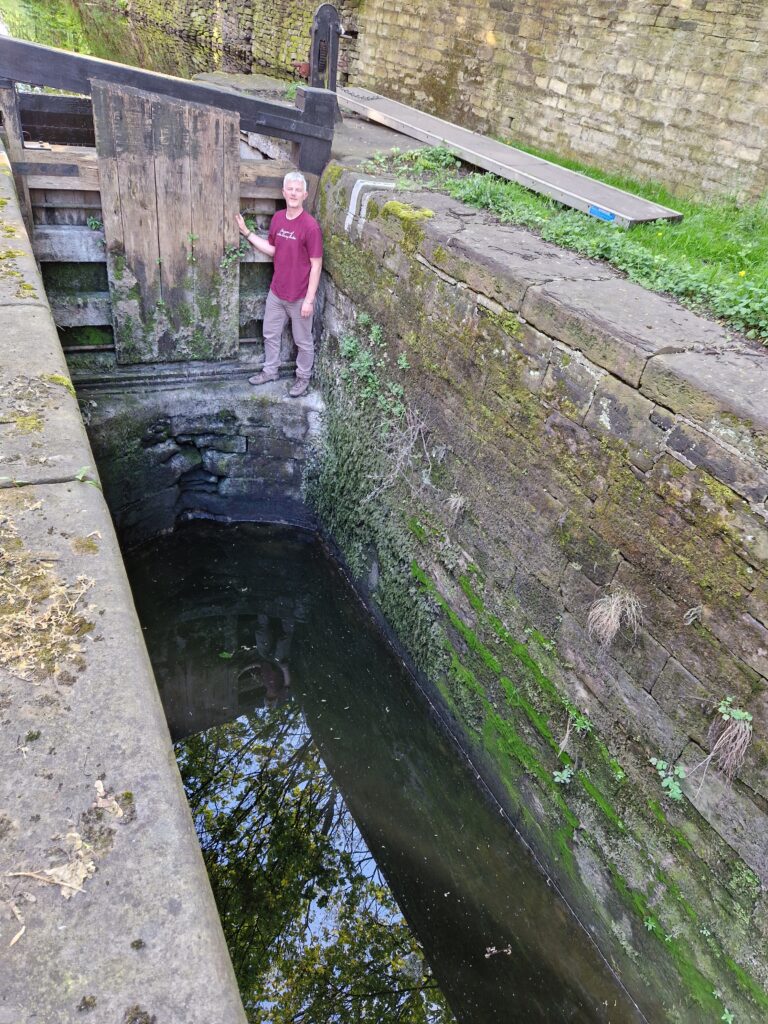
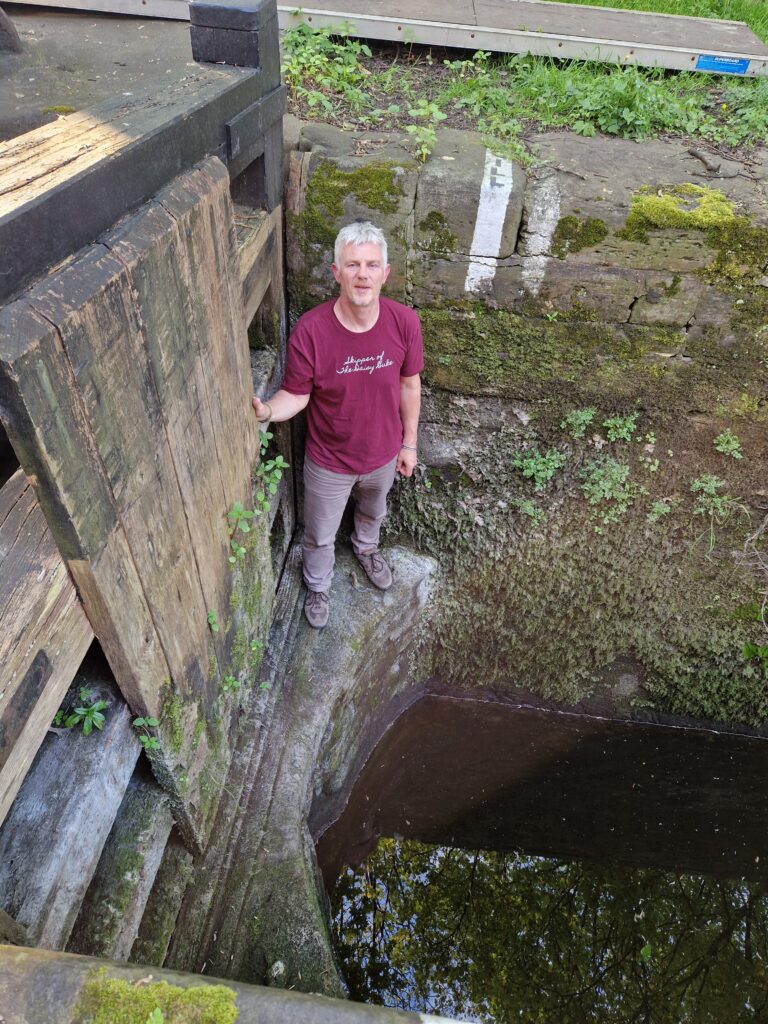
The cill is where the floor of the upper level finishes before dropping down to the bottom level. I am 6′ so you get an idea of the depth of the water, in this section, once the lock is open and the boat goes up the canal. You can see behind me 2 white lines and on one of them has the word CILL painted in it. This is important when coming down the lock as the stern (back) has to be forward of this line. If not, on some locks, the water level drops past the cill and if you aren’t forward of it then the stern is caught on it as the bow (front) continues to drop down. There are many horror stories and pictures of boats getting stuck in this position and we don’t intend joining them.
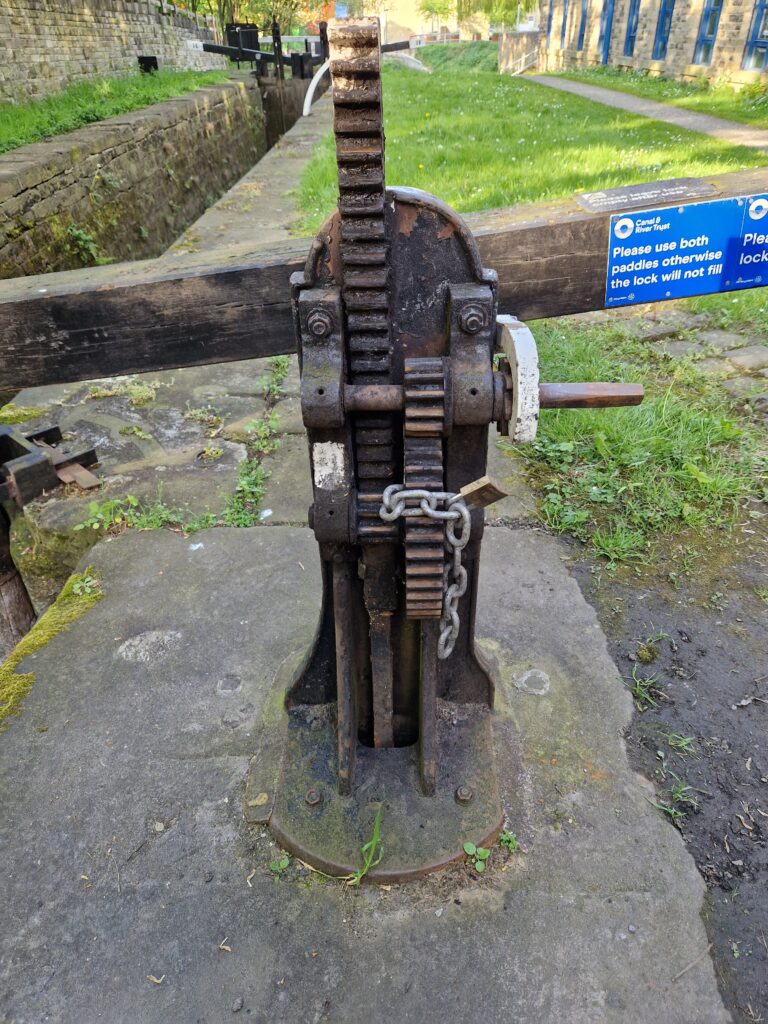
This picture shows a chain padlocked around the winding gear of the paddle. The paddle is what is opened using the windlass to let water into the lock from above. On this occasion the CRT have chained it up to prevent anyone allowing water to pass through the lock as the system is backfilled with water.
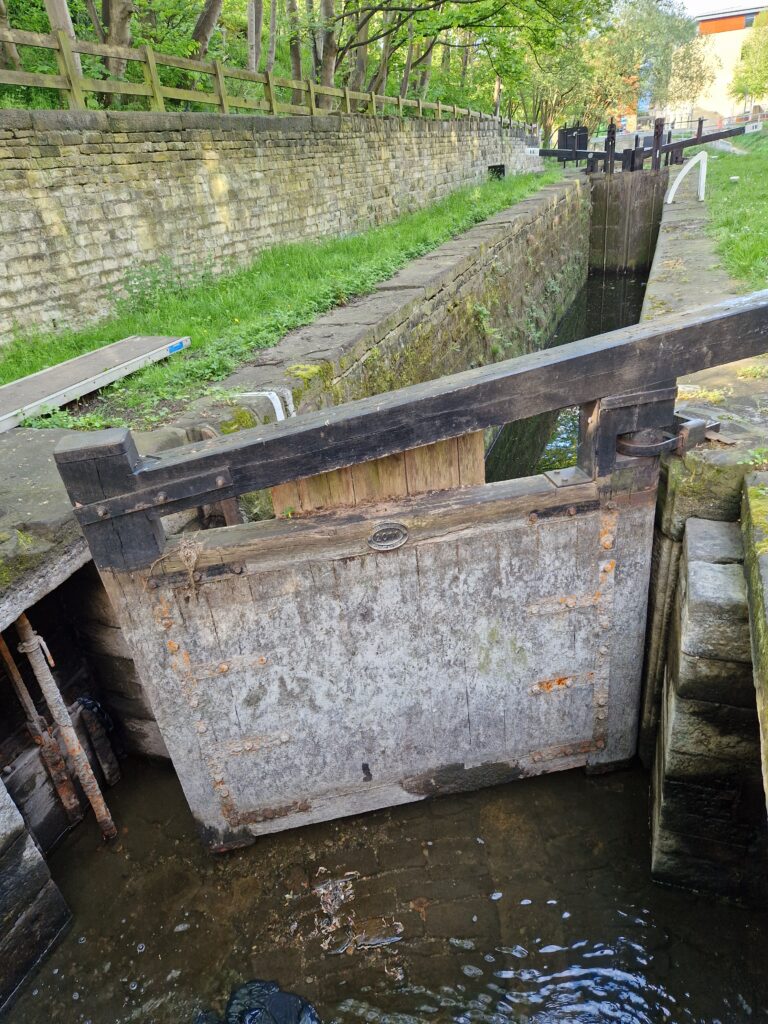
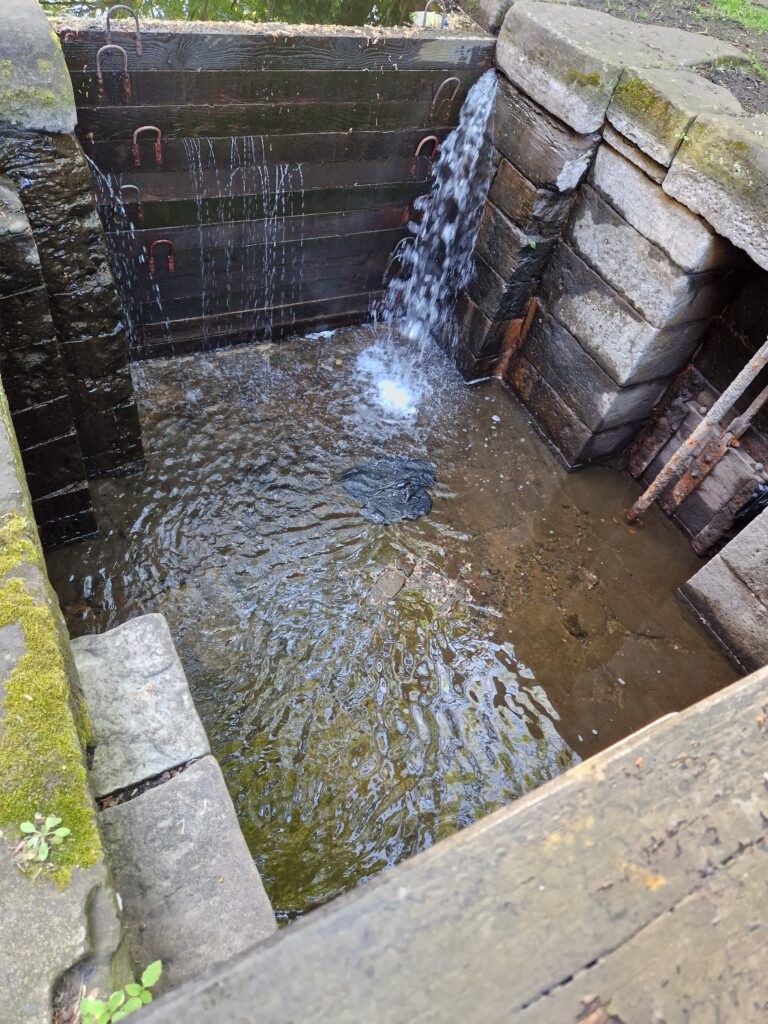
These 2 pictures show the other side of where I was stood and shows the lock gate itself slightly ajar. Note the paddle on the opposite side that is actually lifted when winding the mechanism up on the ground. This opens a channel for the water to flood the lock itself. The picture looking up the canal shows big timbers (a bit like railway sleepers) that have been slid into a cut that passes down each side of the entry point. These timbers hold the water back so that water doesn’t flow through the lock whilst it is being filled. Next time you see a lock check these slits out on the upper side. We’ve all probably seen them but not known what they are for, if anything. They are not there by accident but instead a designed piece of brilliant engineering at the time.
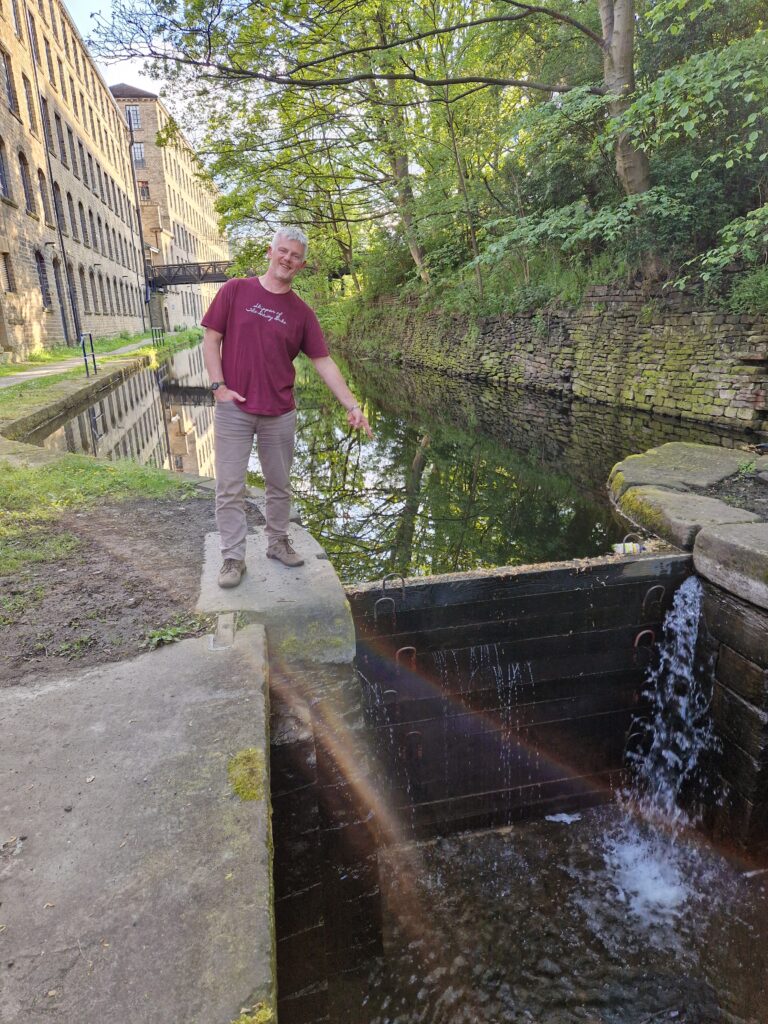
This last picture simply shows a fool, albeit a good looking one, pointing at the dam. You will see that each timber has metal loops on each side. Once the canal is full, chains or ropes will be placed on each loop before pumping water over the top to fill the lock. Once the water level is equal to the upper canal then the timbers are hoisted out one by one as the water pressure will be equal on both sides and, hey presto, the system is back to being full of water. This picture shows that this bit of the canal has filled up nicely but it has to be filled all the way back to Lock 5 East which the CRT are saying won’t be until May 19th, hence our necessity to change plans and travel the Rochdale canal to avoid this. More on that later.